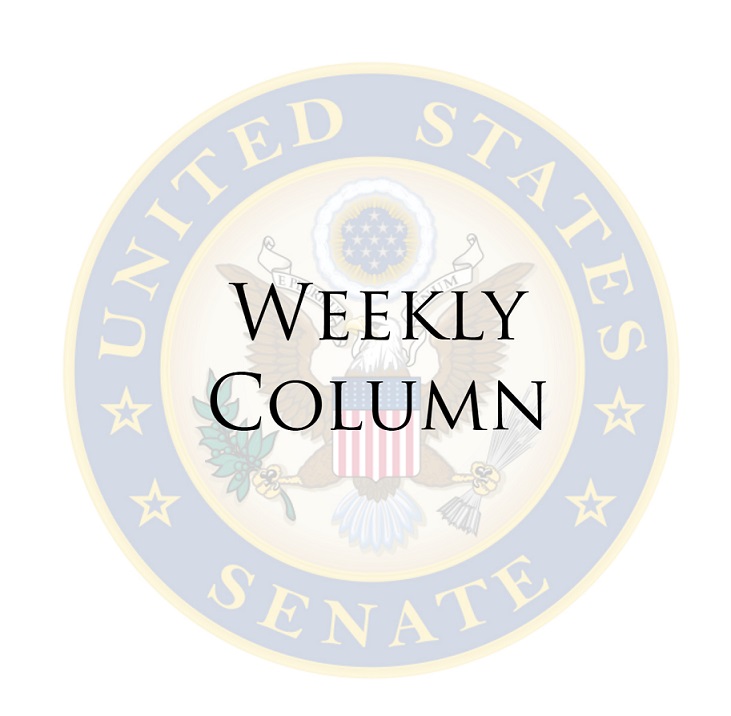Older Americans and Opioid Misuse: Supporting An Often Overlooked Population in the Opioid Crisis

Emergency medicine physician Dr. Charles Pattavina has seen many patients at St. Joseph Hospital in Bangor who are struggling with prescription drug addiction, many of whom are older Americans.
As Chairman of the Senate Aging Committee, I invited Dr. Pattavina to testify at a recent hearing that focused on the continued challenges of identifying opioid misuse among older adults, the efforts to reduce seniors’ dependence on opioids, and the need to expand access to treatment for those battling addiction. Dr. Pattavina discussed his experience treating this older population, which is often overlooked in the current opioid crisis.
“While the effects of the opioid epidemic on seniors are in large part similar to the effects on the population as a whole, the epidemic does present some unique challenges for older Americans,” said Dr. Pattavina.
Dr. Pattavina explained how increased incidences of acute illnesses and injuries among older Americans make them more susceptible to opioid misuse. Health care providers play a critical role in ensuring older adults’ pain is managed while reducing the risk for addiction. Dr. Pattavina noted that education and outreach efforts, as well as Maine’s prescription monitoring program, help reduce overprescribing that can lead to dependency.
To assist those facing addiction, Dr. Pattavina called for removing barriers to inpatient residential treatment and medication-assisted therapy, as well as addressing the shortage of psychiatric services. He also observed that seniors are affected by the opioid epidemic in other ways beyond prescription drug abuse.
“In addition to being at risk for crime such as having their medications stolen and diverted by caretakers, family members, and others, we are seeing many cases in which people who have become dependent on these medications seem to be tapered off them too quickly with little offered in the way of alternative pain management,” Dr. Pattavina said.
Many perceive the face of opioid addiction as young. The epidemic, however, intersects just as much with older adults. In fact, opioid abuse actually has declined in younger groups such as those between ages 18 to 25, but the epidemic almost doubled among Americans over age 50 according to the Substance Abuse and Mental Health Services Administration. In 2016, one in three people with Medicare Part D — 14.4 million beneficiaries — received an opioid prescription, 500,000 received high amounts of opioids, and 90,000 were at serious risk of misuse or overdose according to the U.S. Department of Health and Human Services.
Alternatives to opioids are critical, yet those alternatives may also be more expensive and less convenient for patients. For example, physical therapy can benefit patients suffering from pain, support long-term recovery, and stave off the need for medication. Yet, patients who work may not have the flexibility to leave their jobs for regular physical therapy appointments. Repeated travel can also be a substantial hurdle for some patients, particularly during the winter or when a medical condition makes driving unsafe.
While there is no silver bullet to ending this scourge, Congress and the Aging Committee are fighting back on multiple fronts. Congress passed the Comprehensive Addiction and Recovery Act, or CARA, as well as the 21st Century Cures Act, and the recent budget agreement contained $6 billion to address the opioid crisis. Last year, HHS issued more than $800 million in grants to support access to opioid-related treatment, prevention, and recovery, while making it easier for states to receive waivers to cover treatment through their Medicaid programs. We must ensure that those funds reach local health care providers, treatment and recovery organizations, and groups and schools involved with prevention and education efforts without delay.
I have authored two bills to further address this epidemic. The Safe Disposal of Unused Medication Act would authorize certain hospice employees to dispose of controlled substances in a patient’s residence after the hospice patient dies. This would reduce the dangerous risk of diversion of unused painkillers. Another bill, the Opioid Peer Support Networks Act, would authorize grants to support the creation of peer support networks, and create a national technical assistance center to provide the resources and training to help them be successful. Through these networks, those battling addiction support one another on the road to long-term recovery.
In addition, the Food and Drug Administration recently approved the first non-opioid treatment for the management of opioid withdrawal symptoms in adults. Greater innovation in this area as well as the development of more non-opioid painkillers are crucial, but we must continue to reexamine this issue from every angle, as the opioid crisis continues to tighten its grip not only on older adults, but also on the future generations of Americans.